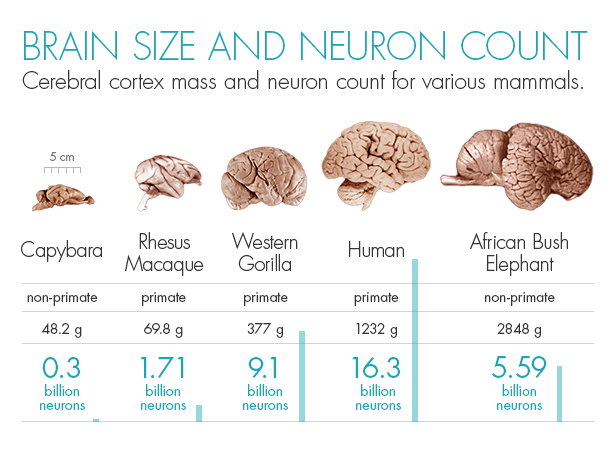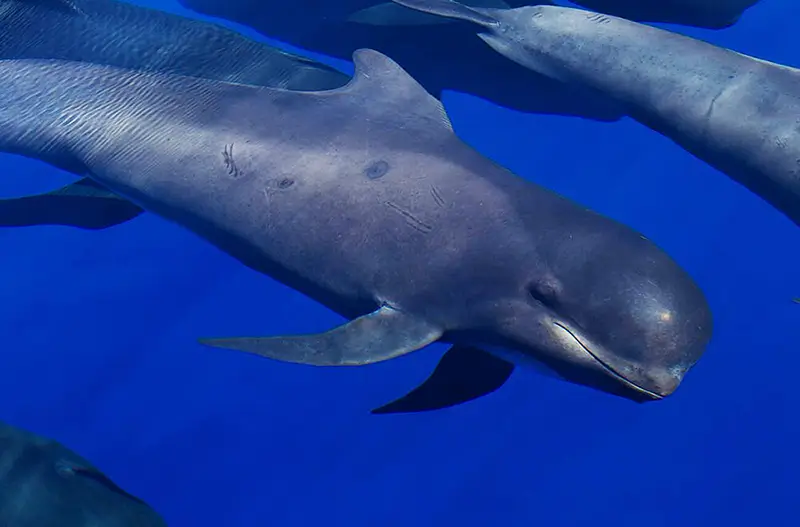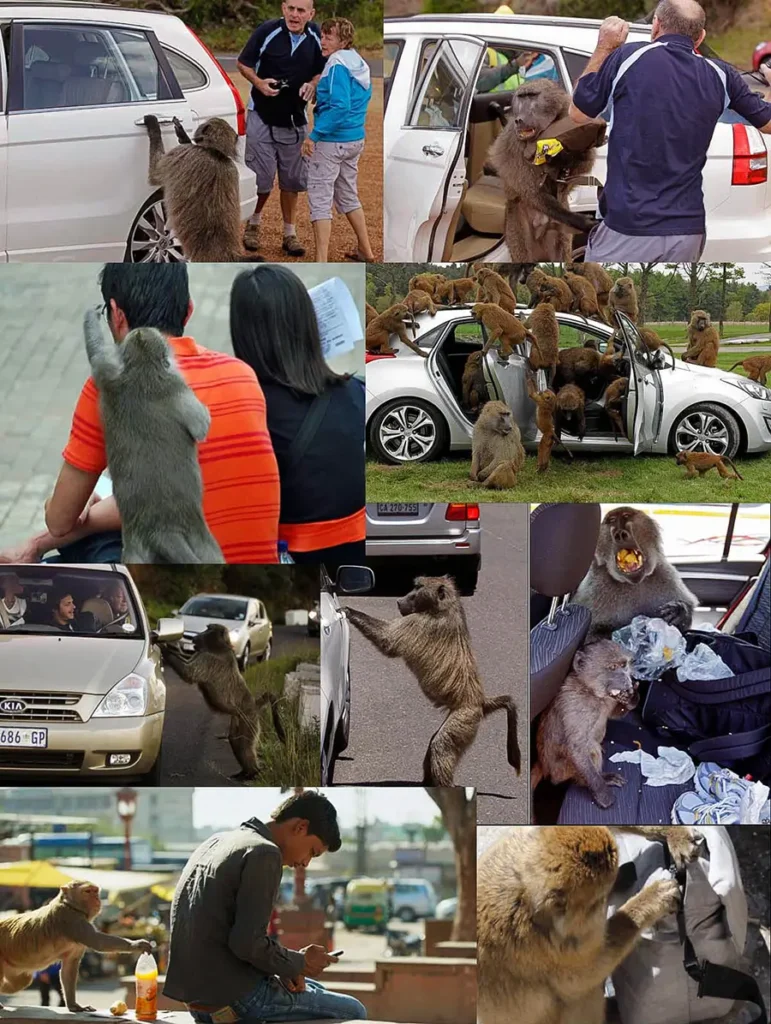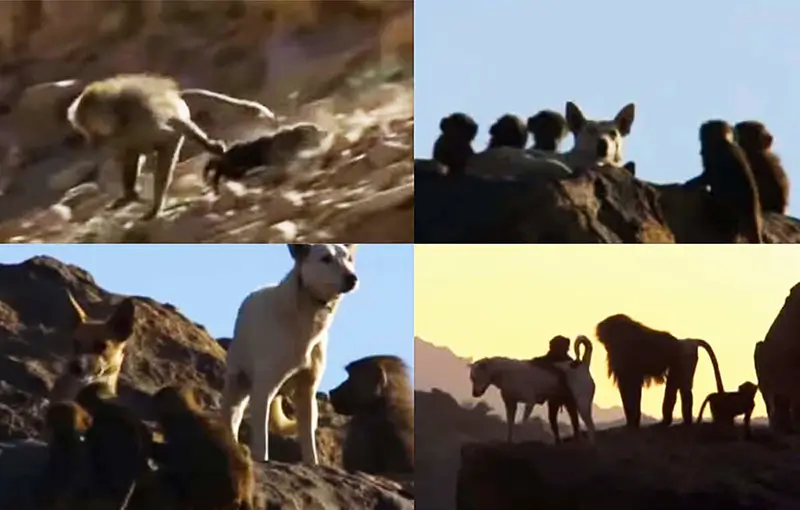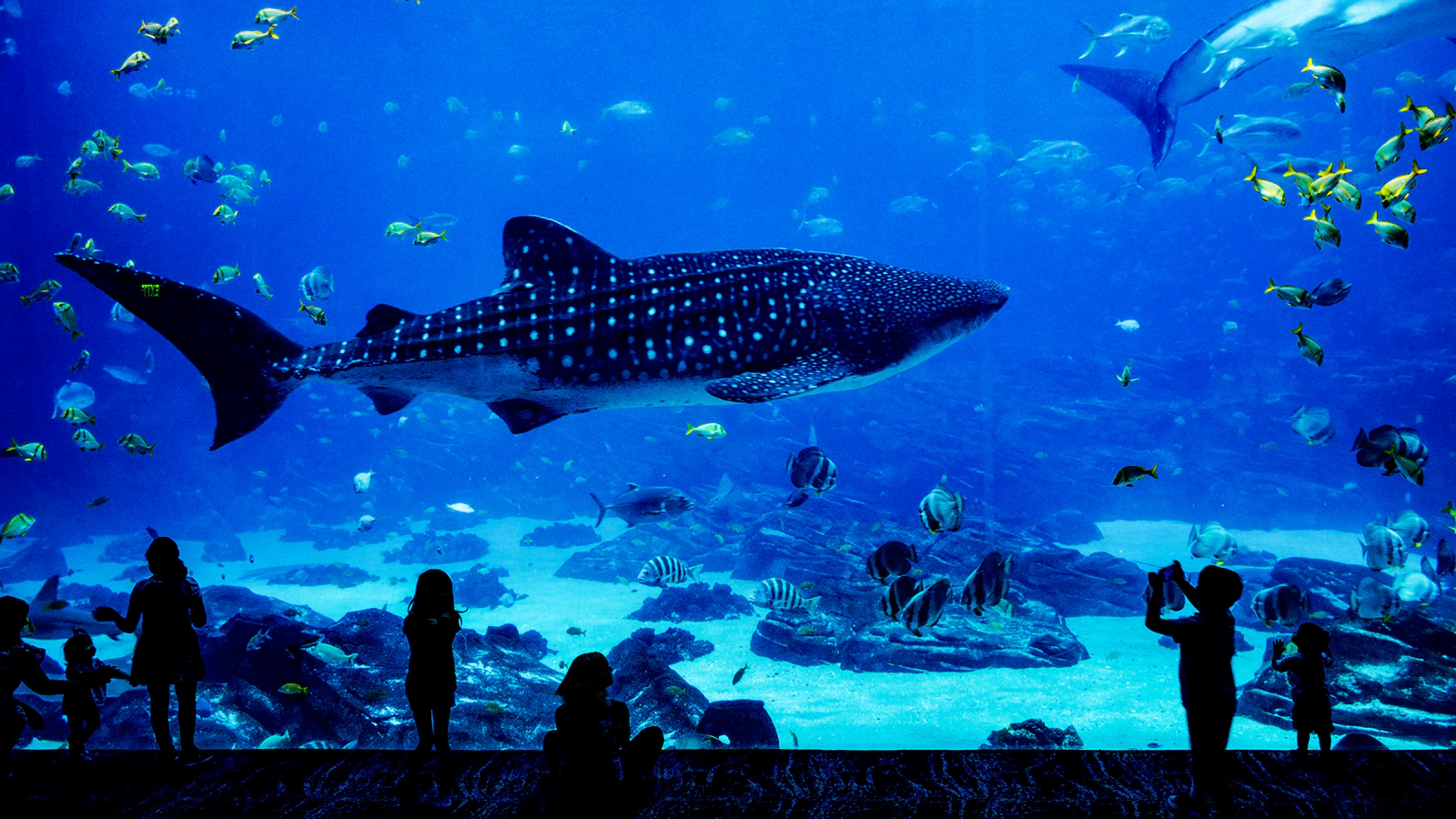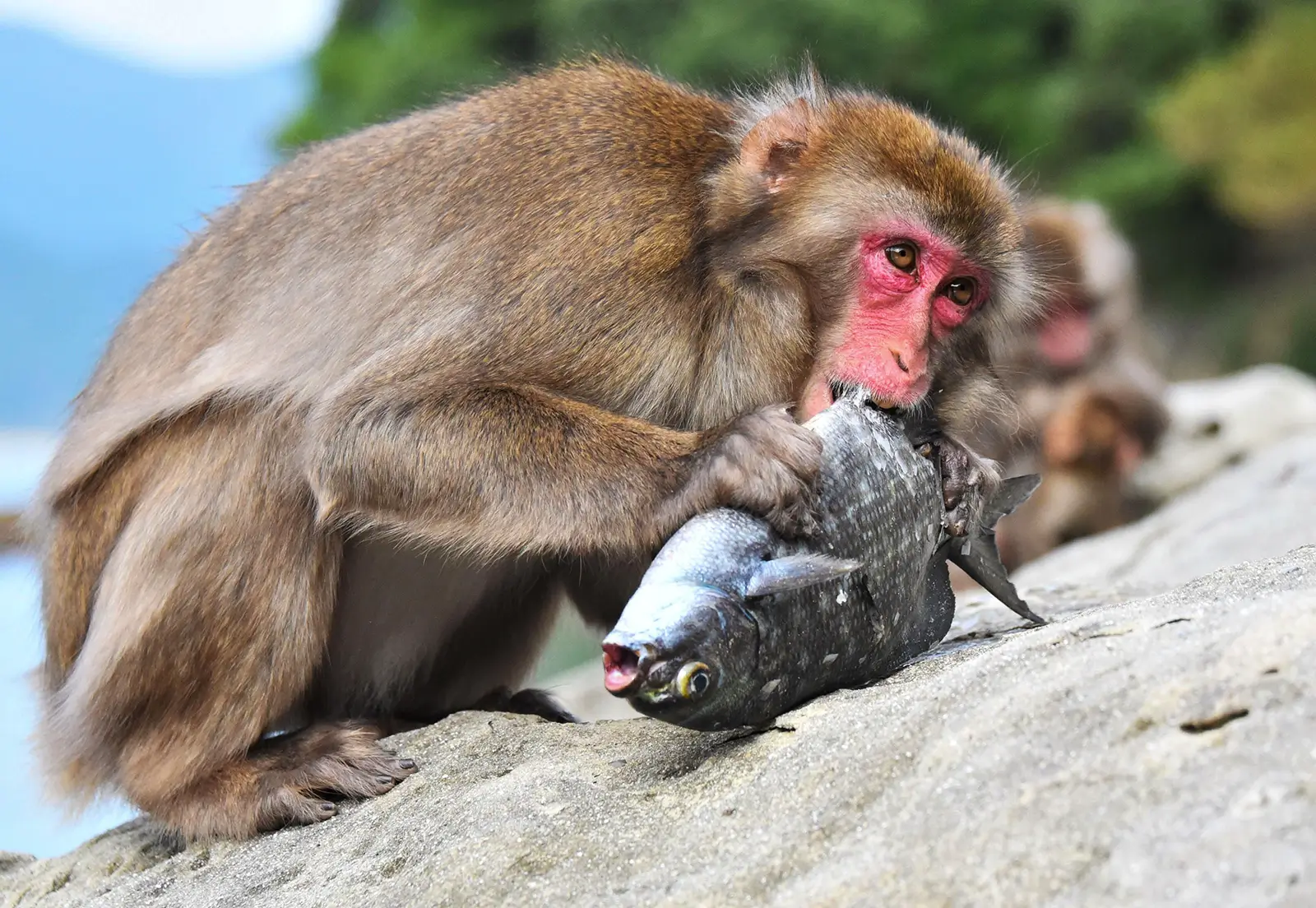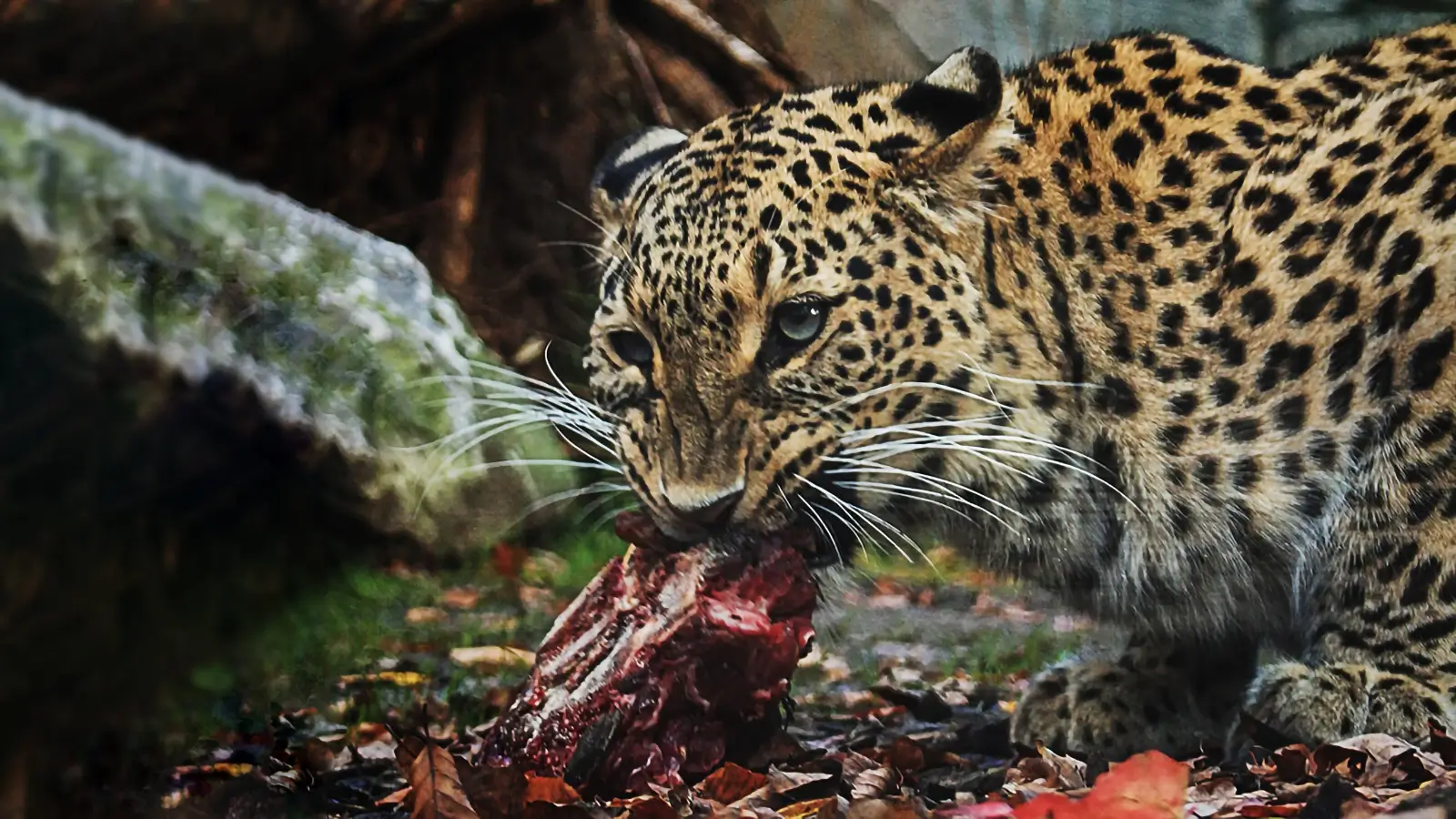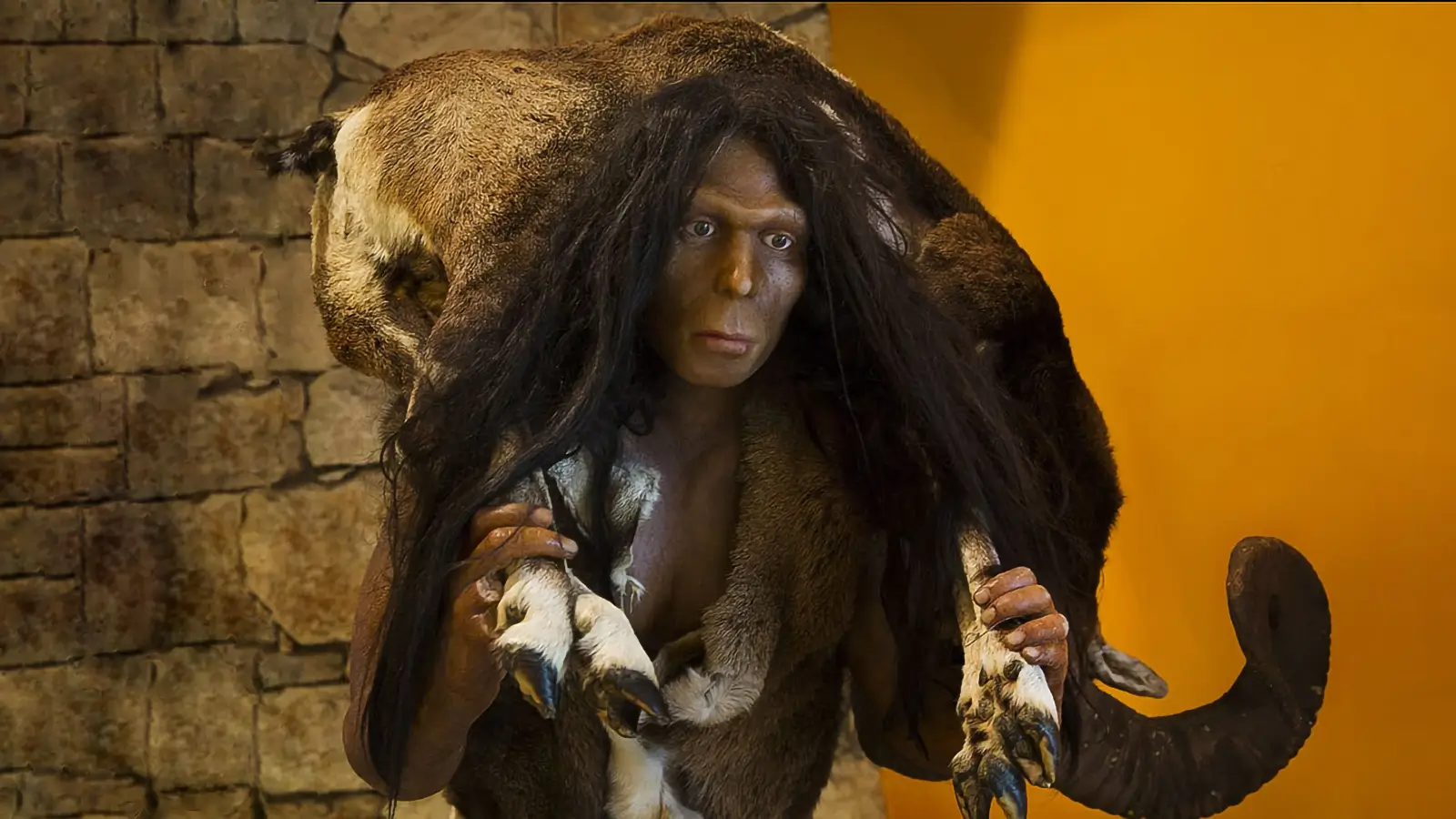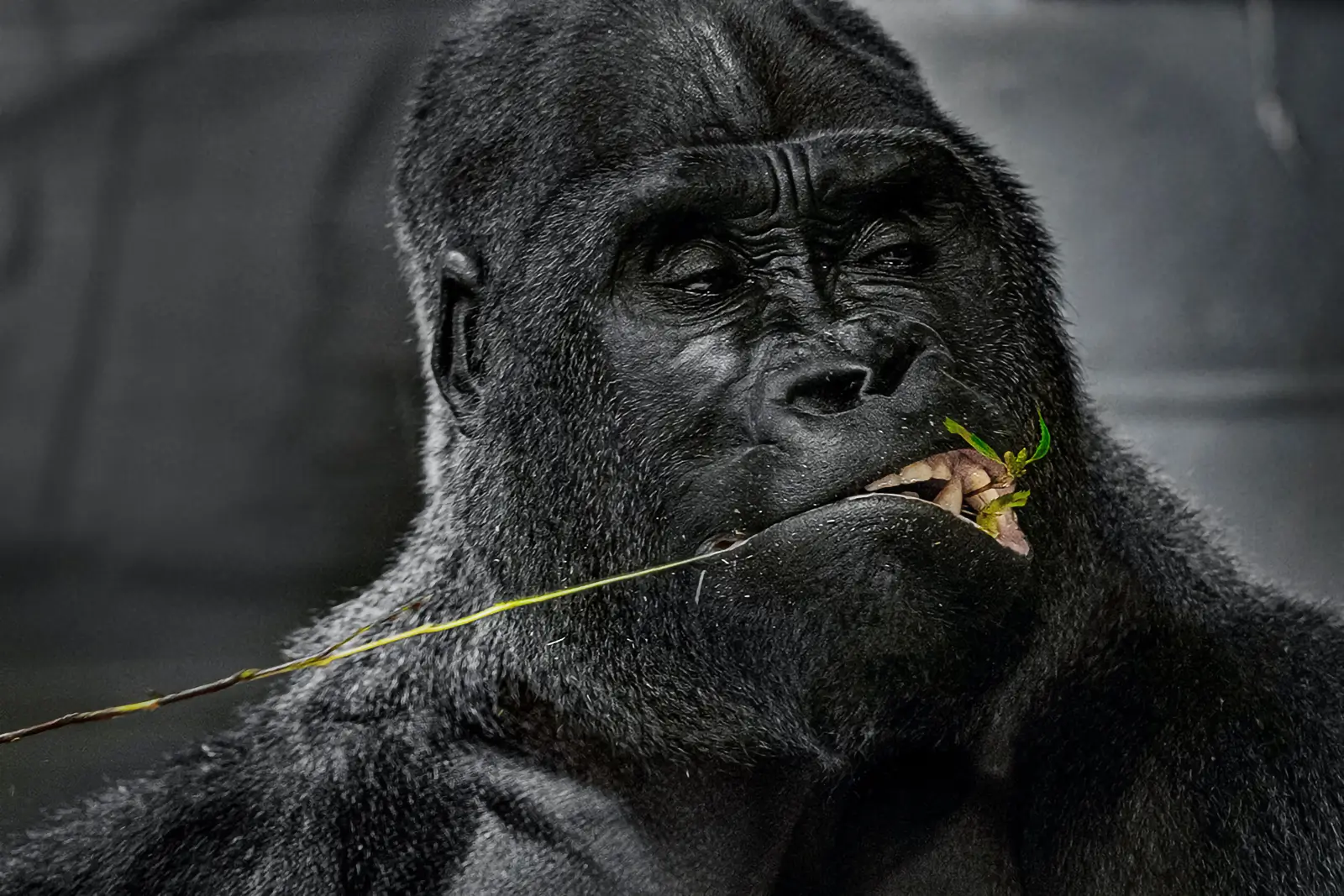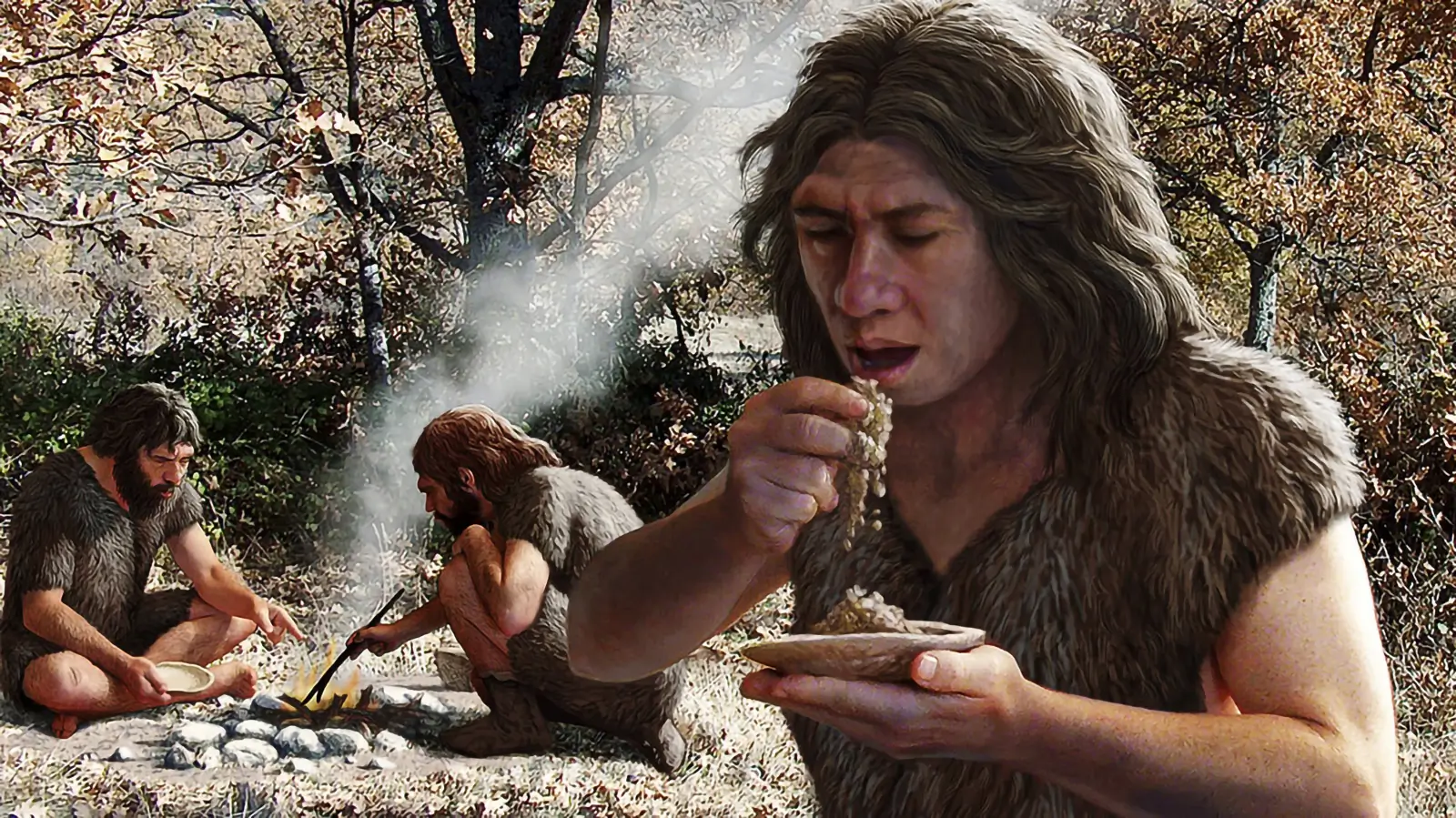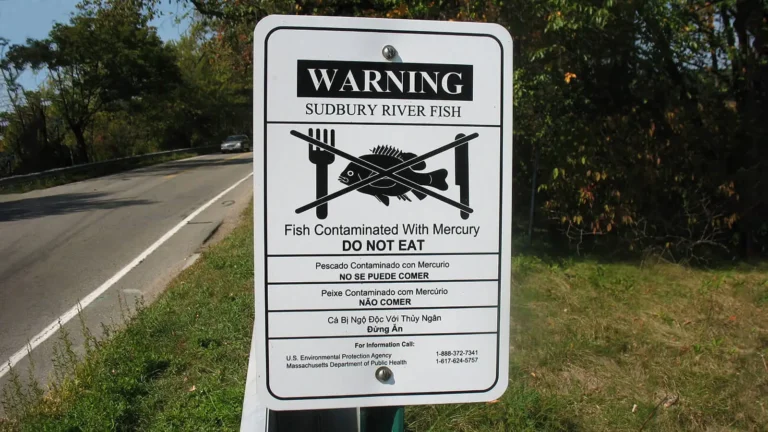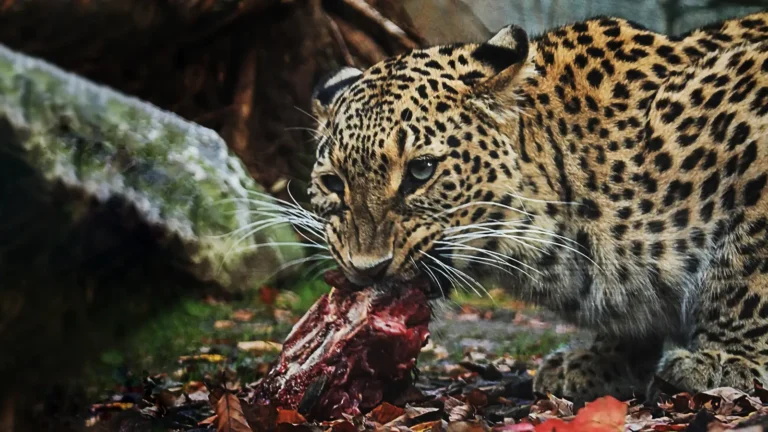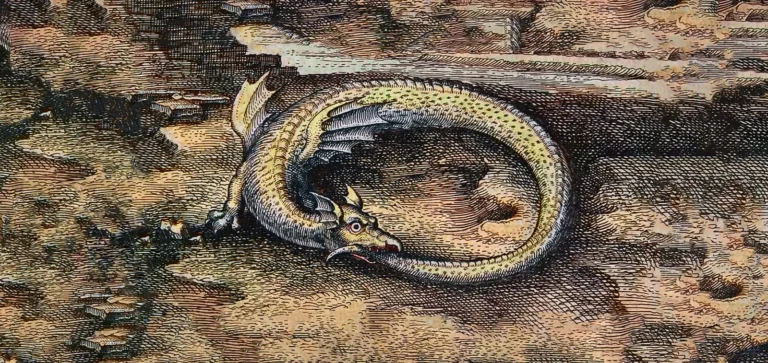Humano de carne, ou seja, o mito?- O animal cognição
Não somos mais inteligentes espécies se nós cientificamente medida animal cognição. As barbatanas longas baleia-piloto cérebro neocortical parte contém mais neurônios do que os nossos próprios.
Milos Pokimica
Escrito por: Milos Pokimica
Revisto Clinicamente Por: Dr. Xiùying Wáng, M.D.
Actualizado em 9 de Junho de 2023Já alguma vez pensou no que o seu cão está a pensar? Ou como é que os golfinhos aprendem a cooperar para apanhar peixe? Ou se um chimpanzé pode aprender a linguagem gestual? O campo da ciência que investiga a capacidade mental dos animais chama-se cognição animal, que é o estudo das mentes dos animais, particularmente como eles pensam e aprendem. Investigar não só o que os animais fazem, mas também os processos mentais que sustentam o seu comportamento.
A cognição animal é um assunto complicado. Até aos anos 60, o termo cognição animal era considerado um oximoro porque os animais eram considerados sistemas simples que simplesmente respondiam a vários estímulos de forma evolutiva, pré-programados e invariantes. Contudo, à medida que os investigadores começaram a observar de perto os animais no laboratório e na natureza, aperceberam-se de que esta visão simplista não explicava os padrões de comportamento observados. Embora haja tantas definições de cognição animal como há investigadores, a maioria dos cientistas concorda que a cognição animal, tal como a sua contraparte humana, envolve essencialmente o processamento de informação: como um sujeito, dentro do seu sistema perceptivo específico da espécie (auditivo, visual, olfactivo, gustativo, somatosensorial), recebe dados do mundo em que habita (incluindo dados de outros indivíduos), e usa o seu cérebro para procriar usando a sua neurobiologia específica da espécie. Nas últimas décadas, o estudo da cognição animal expandiu-se para incluir uma gama espantosamente diversificada de espécies, desde insectos aos nossos parentes mais próximos, e primatas não humanos, bem como uma vasta gama de técnicas.
The field can be subdivided into several subtopics. Researchers who specialize in comparative psychology, for example, examine a specific type of cognition, such as numerical competence, across various species, whereas researchers who specialize in cognitive ethology look at how a particular species’ evolutionary traits allow it to interact in various ways with one or more aspects of its environment. Because all studies involve various aspects of attention, categorization, memory, reasoning, and problem-solving, most researchers conduct studies that overlap a number of different subtopics, and sometimes answers to scientific questions can only be found by combining laboratory and field research. In every case, scientists conduct carefully controlled experiments or well-planned observational studies.
Hoje temos uma linha de estudos, mas num passado não tão distante, mesmo o termo cognição animal foi negado ao ponto de mesmo o comportamento humano em primatas ser considerado um desencadeamento instintivo, sem inteligência. Os humanos eram a única espécie inteligente, os humanos eram a única espécie no planeta Terra que tinha alma, e Deus fez neles a imagem de si próprio, os humanos estão aqui para governar e todos os animais, independentemente do seu nível de inteligência, estão lá apenas para serem uma fonte de alimento. Esta opinião ainda prevalece na maioria da população e um dos mitos que ainda existe é que tudo isto se deve ao facto de, de alguma forma, crescermos um cérebro maior na idade da pedra quando começámos a comer carne como uma fonte adicional de proteínas e energia que permitiu o nosso cérebro crescer.
O problema com esta crença é que não existe uma relação particular entre tamanho do cérebro e inteligência em primeiro lugar, e mesmo que haja uma história sobre cognição animal na realidade não é realmente uma história sobre carne consumo ou consumo humano de carne. É mais complicado do que isso.
Human adults have around 3 pounds of brain weight, dolphins have 3.5 pounds, an elephant is around 10.5, and sperm whales are around 17.2 pounds. Predators as a general rule tend to have a relatively larger brain than the animals they prey upon. Placental mammals also tend to have larger brains than marsupials such as the opossum. There is a formula known as the encephalization quotient for measuring the species’ brain size related to expectations based on its expected body size. Throughout the entire evolution of Homo sapiens, the prevailing trait was a steady increase in brain size. It is the truth that much of that size can be attributed to the corresponding increases in body size. Neanderthals, for instance, and many people do not know this used to have larger brains than modern Homo sapiens. What is more important than just the size is how the brain is wired and neuron count.
What is unique about the human brain is that the neuron count in one specific part of the brain called the cerebral cortex is much higher than in any other animal on the Earth. The human brain has 86 billion neurons if we count them all; 69 billion in the cerebellum; 16 billion in the cerebral cortex and 1 billion in the brain stem and its extensions into the core of the brain. The cerebellum orchestrates essential bodily functions and movement and is a primitive part of the brain, or let’s say an essential part. The cerebral cortex is the brain’s thick corona, the real deal. It is responsible for self-awareness, language, problem-solving, sophisticated mental talents, and abstract thought. If we want to measure the intelligence of the species, then we need to count neurons in the cerebral cortex. That is it. It is that simple. For example, the elephant brain is three times the size of our own and has 251 billion neurons in its cerebellum, which is needed to manage its massive trunk, but only 5.6 billion in its cortex. Also to be clear an elephant is considered to be a highly intelligent species. If we look at the great apes, we are the winner. We have 16 billion neurons in our cortex, but I only was referring to great apes. Homo sapiens appear to have the most significant number of cortical neurons of all species on Earth.
Oh, espera. Acabei de mentir. Nós não somos os mais inteligentes. A baleia-piloto de barbatanas longas é que é. A sua parte neocortical do cérebro contém substancialmente mais neurónios e células gliais do que o neocórtex de outras espécies com cérebros grandes, incluindo os humanos (Mortensen et al., 2014).
Somos as espécies mais inteligentes do que qualquer outra se contarmos apenas as espécies animais terrestres, e temos braços, pernas e fala para que possamos construir tecnologia, mas adivinhem o que, por estas medidas, não somos as espécies mais inteligentes da Terra. A baleia piloto de barbatanas longas é.
The highest number of neurons in the cerebral cortex is what makes species intelligent. Primates evolved a way to pack far more neurons into that area than other mammals did. The great apes are tiny compared to elephants and whales, yet their cortices are far denser. Orangutans and gorillas have 9 billion cortical neurons, and chimps have 6 billion. So by these measures, humans are 44% more intelligent than orangutans for example because we have 16 billion neurons and they have 9. So if the average IQ in humans is 100, the IQ of orangutans would be 56. Chimpanzees fall within the 35-50 range usually. Not bad at all. Even the small monkeys are very intelligent and more intelligent than their counterpart in size. When we need to think every time we need to eat, it forces the brain to develop foraging strategies. Let me give an example. In places like South Africa or India, there are a large number of urban monkeys. These wild animals came by their own will to the cities in search of food. In their view, we are just another monkey species. They are not afraid of us at all. They consider us to be non-frightening because we are slower than them and to no small extent weaker, and we have all those food laying around everywhere. For wild monkeys, it is easier to forage for food in the human environment. Stray dogs do it by sniffing food out, they use their noses, but monkeys use their brains to do the same. Because of the movies and culture average, North American is likely to think that monkeys are sweet and cute animals with whom they can have fun and are super cute when wearing human clothes. In real life, they are everything except cute. For example, they are known to roam neighborhoods in gangs. Baboon gangs run wild in parts of the world like Suburban South Africa. They travel in a flock of around 30, and all of them move following the leader but are so vast apart that it is difficult to stop them from sliding into built-up areas. They can cross walls and roofs at speed. Gangs always have a leader, and they go foraging for your stuff. Breaking and entering, aggressive behavior, and stealing. Regular thug life and it is not funny at all. They break into people’s houses to steal food, and break into cars, and they know how to open the doors or anything else in that manner. If they see you do it, they can do it too. They are very intelligent.
Let’s think about this. Small brain monkeys can see you use technology and then they can start to use it also for themselves. They learn by themselves how to open windows, how to open doors of cars and fridges and apartments, they can sneak behind your back and steal, and they can unzip zippers and so on.
Eles não estão apenas conscientes de si próprios, estão conscientes da sua forma de pensar para se poderem colocar na sua posição e prever como vai reagir para que o possam manipular. Não estou a brincar. São conhecidos por se esgueirarem nas tuas costas e roubarem coisas, e são conhecidos por te atraírem para fora.
Um deles rouba à nossa frente e começa a correr e, quando saímos para o perseguir, outros macacos que não vimos entram e roubam coisas enquanto estamos a perseguir esse macaco. Isto não é cognição animal, é cognição plena. E se isso não for suficiente, eles vão simplesmente tirá-lo das suas mãos fisicamente. Se tiveres algum problema com isso, então eles vão dar-te uma bofetada na cara. Eles não têm medo de nós. E podemos dizer que isso já é suficientemente mau, mas há mais. Quando estão aborrecidos, vão andar à volta das pessoas e divertir-se. O vice-presidente da câmara de Nova Deli morreu devido a um ataque de macacos. Não directamente, não foram eles que o atacaram, mas ele tropeçou na varanda quando tentava lutar contra eles no seu apartamento. São agressivos e inteligentes. De acordo com um estudo (Grainger et al., 2012), os babuínos não têm uma linguagem conhecida ou algo semelhante, mas foram capazes de separar com exactidão palavras inglesas reais de sequências de letras sem sentido. Se os babuínos têm a capacidade física de falar, o seu nível de cognição animal é tal que terão uma linguagem escrita real, porque têm a inteligência adequada para isso, uma vez que a capacidade de distinguir palavras reais de palavras não reais é o primeiro passo no processo de leitura.
Let’s compare for example species of herbivorous monkeys with carnivorous species of the approximately same size. In the documentary “Animals Like Us” filmmakers documented the kidnapping of wild dog puppies by baboons and raising them in their own baboon tribe as members or pets. Baboons and dogs have similar sizes. The clip of the series which was filmed in a garbage dump near Ta’if, Saudi Arabia, shows a male baboon dragging a puppy away from its den as it screams for its mother. Stolen dogs grow up with the baboon species, like a family member or a member of a group. They were eating with them, sleeping, and moving together. The baboons will groom and play with them, and that is important. Baboons only play with family members. The relationship seems to benefit both the dog and the baboon. Domesticated feral dogs do the same job that they have in human society, and that is to guard the territory. They keep wild dog packs away from monkeys at night while they sleep and in return, they are treated with love and care just like humans would a family pet. Note that in this situation it is important to understand that dogs had more of an equal status in the tribe, they were not pets as monkeys did not feed them. Dogs are carnivores and would eat dump rats and other small animals and meat that they can find. They would not eat fruits and vegetables and other grains and other food in the dump yard of plant origins that baboons would eat. There was no direct competition for food thus they have a common tribe in a symbiotic relationship. Now, this video made a lot of controversies. People have a hard time accepting human-like behavior in animals because of our self-image. Was there an actual familiar bond happening between the baboons and dogs, again, we will not know until there’s real and scientific research done. There is one more video featuring a baboon manhandling a puppy that popped up. A Cornell student named Luke Seitz filmed it. He was on a bird research trip in Ethiopia when he recorded a similar situation of a baboon carrying a dog around “like a pet.” He also seemingly observed this behavior over a period of days, so it was not just a fluke.
Num outro caso em Guassa Plateau, o primatologista etíope Vivek Venkataraman observou uma cena notável: lobos e macacos casualmente se misturam. Em circunstâncias normais, os macacos são presas, mas nesta situação, os lobos não pareciam ter interesse em comer babuínos. Os babuínos e especialmente os jovens são presas fáceis para os lobos. De facto, pareciam fazer tudo o que podiam para fugir a qualquer confronto. Ignoravam-se mutuamente e passavam horas a vaguear pelos grandes rebanhos de gelada à procura de roedores. Porque não competem por uma fonte primária de alimento e atacar a grande colónia de macacos resultaria em guerra e coisas más aconteceriam a ambos eles, que coabitam. Os humanos e os gatos selvagens tinham este tipo de acordo. A domesticação de gatos selvagens aconteceu ao mesmo tempo no Médio Oriente e no Egipto. Os gatos selvagens começaram a passar muito tempo em aldeias humanas. Havia muitos ratos presentes, devido à acumulação de armazéns de cereais após a domesticação de plantas selvagens. Era a mesma relação simbiótica. Utilizávamos gatos selvagens para baixar a contagem de ratos; era benéfico para nós tolerá-los. Não os alimentávamos directamente. Além disso, os ratos podem atrair outros predadores, como as cobras, e isso pode ser mortal. Assim, tolerámos os gatos selvagens, e os gatos selvagens toleraram-nos porque somos a fonte da sua nova abundância alimentar e, com o tempo, a domesticação aconteceu. Os macacos também são conhecidos por adoptarem pessoas.
Quando criança de apenas cinco anos de idade, Marina Chapman foi raptada. Uma razão possível era pedir um resgate, mas quando os criminosos não o receberam, abandonaram-na simplesmente na selva colombiana. Durante cerca de cinco anos, quando criança, ela viveu na selva. Ela diz que foi acolhida por um grupo de macacos capuchinhos. Estes tipos de macacos são conhecidos por aceitarem crianças pequenas no seu aprisco. Ela aprendeu a forragear para obter alimentos copiando-os. Ela diz que os macacos ensinaram-na a fazê-lo, mas em qualquer caso, ela sobreviveu. Ela voltou à civilização humana quando foi apanhada por caçadores e vendida a um bordel (nessa altura, não era capaz de falar a língua humana). Acabou por conseguir fugir do bordel, viveu nas ruas e, no final, tornou-se escrava da família mafiosa.
A carne humana é um mito justo e humano. Não importa se estamos a falar de galinhas, porcos ou qualquer outro animal. Os porcos são pelo menos tão inteligentes como uma criança humana de três anos, as vacas desenvolvem laços profundos e duradouros com a sua família e amigos, as galinhas são capazes de distinguir mais de 100 faces diferentes dos membros da sua espécie, e têm 30 chamadas diferentes para assinalar trastes diferentes. A cognição animal é um vasto tópico.
De Kanzi, o bonobo, a Akeakamai, o golfinho. Kenzi, por exemplo, aprendeu mais de 500 lexigramas. Ainda mais importante, conseguiu ligar estes lexigramas para representar a forma de pequenas frases. Num estudo realizado em 1993, ele teve um desempenho melhor do que um humano de 2 anos de idade ao responder a pedidos verbais.
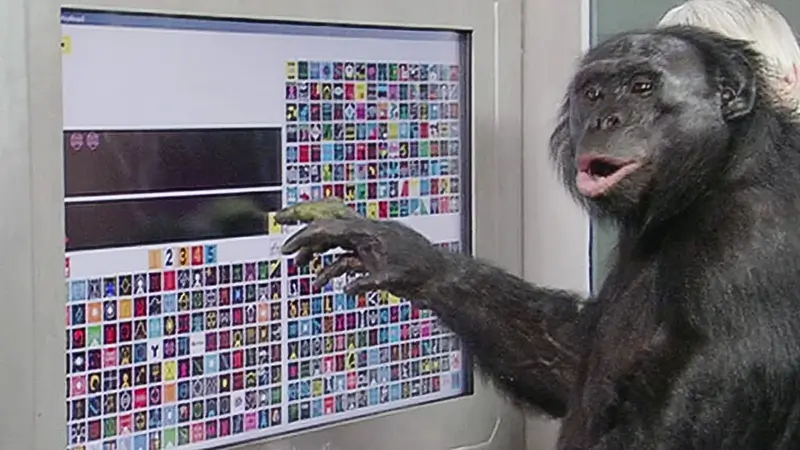
Akeakamai e Phoenix (Wikipedia), o seu companheiro de tanque golfinhos, foram ensinados a reconhecer as palavras. Akeakamai foi ensinado a palavras que eram representadas por diferentes gestos feitos pelas mãos de um treinador humano. Phoenix aprendeu ouvindo as palavras através de sons electrónicos gerados por computador. Estes sons eram reproduzidos através de um altifalante subaquático. Ambos os golfinhos aprenderam com sucesso palavras individuais e eventualmente cordas de palavras ou sentenças. Impressionantemente, os golfinhos puderam compreender as instruções dadas com diferentes estruturas gramaticais e diferentes ordens de palavras. Compreenderam a diferença entre instruções como "Levar a bola ao cesto" e "Levar a bola ao cesto". Quando executaram correctamente as acções necessárias, os golfinhos mostraram que compreendiam os elementos da linguagem. Isto é inteligência ao nível dos humanos. Ainda mais notável, os golfinhos pareciam ser capazes de colaborar de forma criativa. Os gestores humanos pediram aos golfinhos para inventarem os seus próprios truques em conjunto, usando tandem e criando comandos. Os golfinhos responderam com um comportamento sincronizado à sua escolha, tal como mergulhar para trás ou contorcer as suas caudas. Militares do mundo até treinaram e experimentaram golfinhos com a ideia de criar soldados a partir deles. Os golfinhos estão a um nível de cognição que varia muito de acordo com os humanos. No entanto, este facto é irrelevante para nós.
O reconhecimento não tem nada a ver com isto
Não somos a única espécie inteligente e quando olhamos para babuínos e cães um herbívoro, outro carnívoro, os babuínos são de longe mais inteligentes. Além disso, o próprio cão é um animal muito inteligente. É um grande dogma na ciência que, de alguma forma, a fonte de carne recentemente incorporada igual a alguns por cento do total de calorias consumidas sob a forma de medula óssea na dieta inicial dos hominídeos desenvolveu o nosso grande cérebro e que a carne é essencial para a nossa inteligência e tem de ser parte integrante da dieta moderna.
Ao mesmo tempo, não queremos reconhecer nenhuma forma de cognição animal. a cognição animal é um tópico que será cada vez mais importante à medida que os avanços nas neurociências continuarem. A cognição animal está hoje em dia num entendimento científico de que o antropomorfismo já não é um termo dogmático e hoje em dia os cientistas rejeitam tal linguagem. Hoje em dia, os cientistas envolvidos no campo da cognição animal acreditam que todos os animais experimentam emoções, por exemplo. Não só isso, mas também as emoções são vitais para a sua sobrevivência. A cognição animal também desempenhará no futuro um papel nas nossas próprias percepções e teremos de responder a algumas questões específicas.
Será que vamos dar direitos humanos a algumas espécies de animais? Se fizéssemos quais seriam as consequências? Até onde deve ir a cognição animal antes de considerarmos um animal como um candidato aos direitos humanos? Consideraríamos uma morte de um corvo como uma morte de uma criança humana de 7 anos e, se não por que não? Pararíamos as experiências com primatas? Deixariam os japoneses de matar e comer carne de golfinhos? Seriam as pessoas colocadas na prisão se torturassem e matassem animais? E as espécies animais que consideramos como fontes de alimento?
Referências:
- Mortensen, H. S., Pakkenberg, B., Dam, M., Dietz, R., Sonne, C., Mikkelsen, B., & Eriksen, N. (2014). Relações quantitativas no neocórtex delfinídeo. Fronteiras da neuroanatomia, 8, 132. https://doi.org/10.3389/fnana.2014.00132
- Grainger, J., Dufau, S., Montant, M., Ziegler, J. C., & Fagot, J. (2012). Orthographic processing in baboons (Papio papio). Ciência (Nova Iorque, N.Y.), 336(6078), 245–248. https://doi.org/10.1126/science.1218152
Publicações Relacionadas
Você tem alguma dúvida sobre saúde e nutrição?
Eu adoraria ouvir de você e respondê-las em meu próximo post. Agradeço sua contribuição e opinião e espero ouvir de você em breve. Eu também convido você a siga-nos no Facebook, Instagram e Pinterest para mais conteúdos sobre dieta, nutrição e saúde. Pode deixar um comentário e ligar-se a outros entusiastas da saúde, partilhar as suas dicas e experiências e obter apoio e encorajamento da nossa equipa e comunidade.
Espero que este post tenha sido informativo e agradável para si e que esteja preparado para aplicar os conhecimentos que aprendeu. Se achou este post útil, por favor partilhá-lo com os seus amigos e familiares que também possam beneficiar com isso. Nunca se sabe quem poderá precisar de alguma orientação e apoio no seu percurso de saúde.
– Você Também Pode Gostar –

Aprender Sobre Nutrição
Milos Pokimica é médico de medicina natural, nutricionista clínico, escritor de saúde e nutrição médica, e conselheiro em ciências nutricionais. Autor da série de livros Go Vegan? Revisão de Ciênciaopera também o website de saúde natural GoVeganWay.com
Medical Disclaimer
GoVeganWay.com traz análises das pesquisas mais recentes sobre nutrição e saúde. As informações fornecidas representam a opinião pessoal do autor e não pretendem nem implicam substituir aconselhamento, diagnóstico ou tratamento médico profissional. As informações fornecidas são apenas para fins informativos e não se destinam a servir como substituto para consulta, diagnóstico e/ou tratamento médico de um médico ou profissional de saúde qualificado.NUNCA DESCONSIDERE o CONSELHO MÉDICO PROFISSIONAL OU adiar a BUSCA de TRATAMENTO MÉDICO por causa DE ALGO QUE TENHA LIDO OU ACESSADO por MEIO de GoVeganWay.com
NUNCA APLIQUE QUAISQUER MUDANÇAS de estilo de VIDA OU QUALQUER MUDANÇA COMO UMA CONSEQUÊNCIA DE ALGO QUE TENHA LIDO NO GoVeganWay.com ANTES de CONSULTORIA de LICENÇA MÉDICA.
No caso de uma emergência médica, ligue para o médico ou para o 911 imediatamente. GoVeganWay.com não recomenda ou endossa qualquer específicos, grupos, organizações, exames, médicos, produtos, procedimentos, opiniões ou outras informações que podem ser mencionadas dentro.
Sugestões do Editor –
Milos Pokimica é médico de medicina natural, nutricionista clínico, escritor de saúde e nutrição médica, e conselheiro em ciências nutricionais. Autor da série de livros Go Vegan? Revisão de Ciênciaopera também o website de saúde natural GoVeganWay.com
Artigos Mais Recentes -
Planta De Notícias Com Base Em
-
Sticky Marmalade Tofu
on Junho 20, 2025
-
Violife Launches ‘Market-First’ High-Protein Cheddar Alternative
on Junho 20, 2025
-
How to Make Homemade Tofu And Why You’ll Never Want Store-Bought Again
on Junho 20, 2025
-
US Senate Moves To Expand Nondairy Milk Access In Schools
on Junho 20, 2025
-
Vegan Avocado Lime Ice Cream
on Junho 19, 2025
-
6 Vegan Chia Pudding Recipes
on Junho 19, 2025
-
Juicy Marbles & Friends Launches Plant-Based Cod Filet
on Junho 19, 2025
Superior De Saúde De Notícias — ScienceDaily
- Fitness trackers are failing millions — this fix could change everythingon Junho 20, 2025
Fitness trackers often fail people with obesity by underestimating their energy burn, leading to discouraging results and misguided health data. A scientist’s frustrating experience in an exercise class with his mother-in-law where her effort wasn t reflected on the fitness leaderboard sparked a breakthrough. His team at Northwestern developed a new open-source smartwatch algorithm that accurately captures energy expenditure for individuals with obesity, rivaling gold-standard lab equipment and […]
- Self-esteem skyrockets 131% after weight-loss surgery, study revealson Junho 20, 2025
Self-esteem scores jumped a remarkable 131% within just one year of bariatric surgery, according to a large study presented at ASMBS 2025. Tracking nearly 5,800 patients, researchers found a direct link between weight loss and rising confidence, with the greatest psychological boosts seen in those who lost the most weight. Despite differences in gender, race, or procedure type, patients across the board reported profound improvements in self-worth. The findings shine a spotlight on how […]
- 99 trials later, fasting ties traditional diets in weight-loss showdownon Junho 19, 2025
Intermittent fasting might not be a miracle solution, but it stands shoulder to shoulder with traditional calorie-cutting when it comes to shedding pounds and improving metabolic health. A major new analysis reveals that alternate day fasting may have a slight edge, yet none of the methods alone reached clinically meaningful thresholds for weight loss.
- One shot to stop HIV: MIT’s bold vaccine breakthroughon Junho 19, 2025
Researchers from MIT and Scripps have unveiled a promising new HIV vaccine approach that generates a powerful immune response with just one dose. By combining two immune-boosting adjuvants alum and SMNP the vaccine lingers in lymph nodes for nearly a month, encouraging the body to produce a vast array of antibodies. This one-shot strategy could revolutionize how we fight not just HIV, but many infectious diseases. It mimics the natural infection process and opens the door to broadly […]
- Microscopic heist: How lung bacteria forge weapons to steal iron and surviveon Junho 19, 2025
Researchers investigating the enigmatic and antibiotic-resistant Pandoraea bacteria have uncovered a surprising twist: these pathogens don’t just pose risks they also produce powerful natural compounds. By studying a newly discovered gene cluster called pan, scientists identified two novel molecules Pandorabactin A and B that allow the bacteria to steal iron from their environment, giving them a survival edge in iron-poor places like the human body. These molecules also sabotage rival bacteria […]
- How can we make fewer mistakes? US Navy invests $860k in placekeepingon Junho 19, 2025
With $860K in Navy funding, MSU psychologists are developing tools to spot people who can handle complex tasks under pressure. The key? Mastering “placekeeping” staying focused and accurate even when sleep-deprived or interrupted.
- AI sniffs earwax and detects Parkinson’s with 94% accuracyon Junho 18, 2025
Imagine diagnosing Parkinson s disease not with pricey scans or subjective checklists, but with a simple ear swab. Scientists in China have developed a promising early screening method that detects Parkinson s from subtle changes in the scent of ear wax yes, really. By analyzing specific volatile compounds in ear wax and feeding that data into an AI-powered olfactory system, they achieved 94% accuracy in identifying who had the disease. If expanded successfully, this low-cost, non-invasive […]
PubMed, #vegan-dieta –
- Dietary pattern and nutritional assessment in a cohort of mothers identified by neonatal screening for cobalamin deficiency in offspring: an Italian single center experienceon Junho 19, 2025
During pregnancy, nutrient requirements increase while deficiencies can significantly affect pregnancy outcomes. Deficiencies may result from inadequate dietary intake, impaired absorption, or restrictive diets. This study aimed to retrospectively assess the nutritional status and dietary intakes in a cohort of mothers whose newborns were identified with vitamin B12 deficiency of maternal origin through Newborn Screening. Between 2021 and 2024, 107 newborn-mother dyads with altered biomarkers […]
- Intermittent fasting strategies and their effects on body weight and other cardiometabolic risk factors: systematic review and network meta-analysis of randomised clinical trialson Junho 18, 2025
CONCLUSIONS: Minor differences were noted between some intermittent fasting diets and continuous energy restriction, with some benefit of weight loss with alternate day fasting in shorter duration trials. The current evidence provides some indication that intermittent fasting diets have similar benefits to continuous energy restriction for weight loss and cardiometabolic risk factors. Longer duration trials are needed to further substantiate these findings.
- Plant-Based Diet and Risk of Iron-deficiency Anemia. A Review of the Current Evidence and Implications for Preventive Strategieson Junho 17, 2025
PURPOSE OF REVIEW: This review provides a comprehensive overview of iron metabolism, emphasizing the influence of dietary patterns-particularly vegetarian and vegan diets-on iron status and associated health outcomes.
- Protein Intake and Protein Quality Patterns in New Zealand Vegan Diets: An Observational Analysis Using Dynamic Time Warpingon Junho 13, 2025
Background/Objectives: Inadequate intake of indispensable amino acids (IAAs) is a significant challenge in vegan diets. Since IAAs are not produced or stored over long durations in the human body, regular and balanced dietary protein consumption throughout the day is essential for metabolic function. The objective of this study is to investigate the variation in protein and IAA intake across 24 h among New Zealand vegans with time-series clustering, using Dynamic Time Warping (DTW). Methods:…
- Diet and nutrition in cardiovascular disease prevention: a scientific statement of the European Association of Preventive Cardiology and the Association of Cardiovascular Nursing & Allied Professions…on Junho 12, 2025
What we eat is a cornerstone of cardiovascular disease (CVD) prevention, but health professionals may not have a clear understanding of the current evidence-based research to underpin eating habits and recommendations. This study aims to appraise existing evidence-based research on the importance of diet on CVD risk biomarkers, specifically, the effects of dietary patterns, specific foods, and constituents including vitamins/minerals and plant-derived bioactive compounds on CVD risk. […]
Postagens aleatórias –
Postagens em destaque –

Últimas do PubMed, #dieta baseada em vegetais –
- Specialist Savvy Versus Generalist Grit: Elucidating the Trade-Offs in Adaptive Dietary Ecomorphology Amongst African Green and Bush Snakespor Hanlie M Engelbrecht on Junho 19, 2025
Kinetic feeding bones of macrostomatan Afrophidian snakes enable them to consume diverse prey types. While significant research has focused on functional feeding morphology in snakes, it often emphasizes broad taxonomic comparisons or species with distinct dietary ecologies. There is limited knowledge of how small variations in prey type composition may influence feeding morphology among closely related species sharing similar ecological niches. African Green and Bush Snakes (Philothamnus) […]
- Chia (Salvia hispanica L.) Seed Oil Supplementation to the Diet: Effects on in Vitro Rumen Fermentation Characteristics and Lipid Biohydrogenationpor Selma Büyükkılıç Beyzi on Junho 19, 2025
The study investigated the effects of chia seed oil supplementation on the diet with different levels of in vitro ruminal biohydrogenation and fermentation. The treatment groups were control (no additional oil) or the addition of 10, 20 and 30 g/kg of chia seed oil in the diet as DM based. The treatment groups were incubated using a batch culture technique, and the fermentation terminated after 6, 12, and 24 h. The biohydrogenation rate of unsaturated fatty acids varied between 71% and 98% […]
- Plant-based milk alternatives: can they replace the iodine from UK cow’s milk?por Katie Nicol on Junho 18, 2025
Current food systems pose risks to both population and environmental health. Reducing the intake of animal-based foods, such as dairy products, and increasing consumption of plant-based foods align with priorities for addressing climate change and promoting overall health. Plant-based alternatives to cow’s milk can be readily substituted for cow’s milk without altering meal patterns and food habits, making them a popular choice among those reducing animal-product consumption. However,…
- Diet quality, unprocessed plant-based foods, and vascular function in adults with CKD: Secondary analysis of a pilot randomized clinical trialpor Luis Perez on Junho 18, 2025
CONCLUSION: Despite overall low diet quality, higher consumption of unprocessed, plant-based energy and nutrients was associated with lower arterial stiffness. Future studies are needed to explore these associations in larger cohorts with CKD and the effects of diet quality interventions.
- Biaxial testing and sensory texture evaluation of plant-based and animal deli meatpor Skyler R St Pierre on Junho 18, 2025
Animal agriculture is one of the largest contributors to global carbon emissions. Plant-based meats offer a sustainable alternative to animal meat; yet, people are reluctant to switch their diets and spending habits, in large part due to the taste and texture of plant-based meats. Deli meat is a convenient form of protein commonly used in sandwiches, yet little is known about its material or sensory properties. Here we performed biaxial testing with multiple different stretch ratios of four…
- Intermittent fasting strategies and their effects on body weight and other cardiometabolic risk factors: systematic review and network meta-analysis of randomised clinical trialspor Zhila Semnani-Azad on Junho 18, 2025
CONCLUSIONS: Minor differences were noted between some intermittent fasting diets and continuous energy restriction, with some benefit of weight loss with alternate day fasting in shorter duration trials. The current evidence provides some indication that intermittent fasting diets have similar benefits to continuous energy restriction for weight loss and cardiometabolic risk factors. Longer duration trials are needed to further substantiate these findings.
